Getting Your Lawn Mower Blades for Summer
Summer is the season of lawn maintenance, and everyone likes to look outside and see a pristine green carpet. Mowing your lawn is the first step in having a manicured yard, and having a well-sharpened blade is the most critical component of any lawnmower. As they pass over the grass, if the blades are too dull, they will not cut the grass cleanly, but instead, they will tear them off at the end, leaving messy, frayed openings for fungi to creep in. A sharp cutting edge not only makes your cuts look more even but will also cleanly shear the ends of each blade of grass, which prevents diseases from getting in and causing discolored brown patches in your yard. Do not be intimidated.
- Sharpening a mower blade is a rapid and easy activity.
Tools You’ll Need:
- Wrench: A ratcheting socket wrench is ideal, but adjustable wrenches also work simply fine
- Bench grinder
We will use a bench grinder to sharpen the blade for this how-to, but other methods are also available. If you don’t have a grinder or need help picking one out, check out our Bench Grinder Buying Guide or Technique Guide.
- Woodblock
- Common nail & hammer
Step-By-Step Guide for Sharpening Lawn Mower Blades:
1. Disconnect the Spark Plug
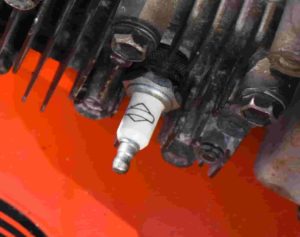
Disconnecting the spark plug is the first step you need to take to sharpen your lawnmower’s blade. This is a safety measure to prevent the motor from accidentally turning on while you are working on it. There is always a chance that the cylinder has compressed gas, and one accidental spark could send the blade spinning with enough force to chop a finger off. It is a gruesome image and not a risk worth taking.
With electric mowers, ensure the power cord is unplugged, or the batteries are removed. This will serve the same purpose as disconnecting the spark plug from a gas motor and protecting you from the motor energizing with your hands in the blade’s path.
2. Tip the Mower To Reveal the Blade
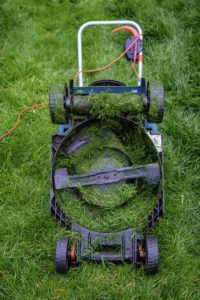
The blade attaches to the bottom of the mower, so you must tip it up to access it. Be careful as you do this; if you have a gas-powered model, keep the carburetor pointing upwards as you tip it over.
- If you do not, gas and oil could spill out, which will kill your grass and cause a toxic environment.
3. Mark the Bottom of the Blade
Once you are finished, it can be challenging to remember which side of the blade needs to be facing up or down. Mark the bottom of the blade with some tape or a marker, and it will be much easier to reattach the right way.
4. Secure The Blade
It would be best to secure the blade so it does not spin while loosening the bolts. A straightforward method is to wear a sturdy pair of work gloves and firmly grasp it with one hand. You will want to wear gloves to protect your hand from jagged edges.

Another popular method is to jam a piece of wood under the blade so it wedges. This can be any block, whether firewood, a 2×4, a wooden dowel, or any other, so long as it is tight and will not break under mild pressure.
5. Remove the Blade
Typically, 1-3 nuts hold the blade in place, and washers or other layers offer a more secure hold. A ratcheting socket wrench works great for this step, as does an impact wrench if you have one. You will need to check your model for specifications about the size of the nuts. Some nuts also self-tighten as the blade spins, so you might need to apply enough force to break them loose.
6. Clean the Blade
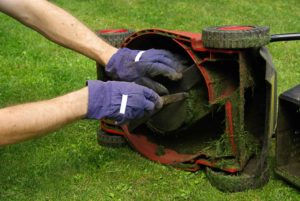
The blade will be caked in grass clippings from use, which you will want to clean off before trying to sharpen it. An excellent way to do this is by spraying it with a hose and then scrubbing it with a soft brush. Cleaning out the underside of the lawnmower deck this way is also a clever idea while the blade is detached. This will also preserve the mower’s life and make it run more efficiently.
7. Make Sure You Have the Proper PPE
Before sharpening your blade, have the proper personal protective equipment. Safety glasses are necessary because the grinder will throw many sparks. Long sleeves with tight cuffs are optional to protect your arms.
Do not wear gloves when you are working with a bench grinder, as it is straightforward for material to get caught on the wheel and sucked in. If a glove gets caught on the wheel, you will not have time to react, and there is a high likelihood of severe injury. Grinders spin very quickly, which might seem unsafe for inexperienced users, but they are safe if used properly.
8. Check the Blade for Damage
Minor dents or nicks in the blade are standard, as small rocks and other debris get chopped up during use. However, if the blade is bent or has large dents or cracks, you must replace it. A broken blade can break during use, which can cause severe damage to your machine and be a significant safety hazard to the operator. A bent blade will not be in balance during use, and it is much safer to purchase a new one that is guaranteed to be correct rather than attempting to fix the curvature yourself.
9. Grind any Dents Out of the Blade
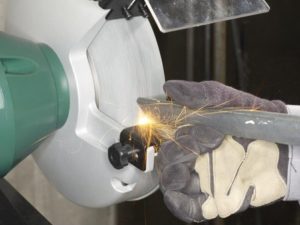
Grind the blade directly perpendicular to the grindstone until dents or chips are mostly worn away. They do not need to be removed entirely, so a few passes over the grinder should be enough. Do not grind down too far, or restoring the sharp edge you need for cutting will be difficult. Removing too much metal can also throw the blade off balance, which we will touch on in step #12.
10. Match the Bevel Angle of the Cutting Edge
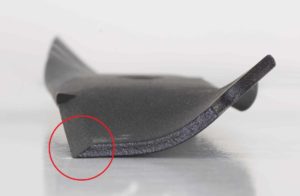
Before grinding away at the blade, match the factory-specified angle for the forefront. A 45-degree angle is standard, but you can always check your user manual if unsure. It would be best to match this angle when you sharpen it, or the blade might not cut grass properly.
11. Grind the Bevel of the Blade
It is time to grind the blade itself. Keep the bevel angle of the blade pointing upwards and face the grinding wheel. Lightly press the bevel face onto the wheel and pull it across to sharpen the entire blade evenly. It will only take a few passes to get it right, so be sure not to take too much material off.
Once you have ground one end of the blade, spin it around and grind the second invention to match. Use the same steps to ensure a sharp point.
12. Make Sure the Blade is Balanced
Once you have restored a taper to both sides of the blade, it is possible that more material was removed from one end than the other. An off-balance blade will make the mower vibrate dangerously and can even damage the motor, so balancing is crucial in sharpening.
Balancing a blade is straightforward; it only takes a common nail. Hammer the tip of a long nail straight into a wall or another sturdy surface and leave about an inch or two exposed. Hang the blade like a picture on the nail, with the center bolt hole as the hanging spot. A balanced blade will stay perfectly even on the nail, while an unbalanced blade will gradually sink on one side. To remedy this, grind a little more off on the side that sank until the blade sits balanced on the nail.
13. Reattach the Blade
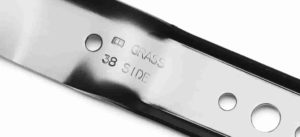
Now that the blade is even and ready to cut again, you can reattach it back to the mower. Secure it precisely the way it was, and the marking from step 3 should help you remember how to put it all back together.
- If you have trouble, the owner’s manual should have instructions to help you.
Repeated Lawn Mower Blade Maintenance
As you trim your yard, all that grass will quickly wear the blade back down faster than expected. To combat this, it is best that you take the time to resharpen twice every season. As you get more comfortable with the steps to sharpen the blade, do not let good habits slip away; always wear personal protective equipment and detach the spark plug before doing any work on your machine.
But if sharpening the blade is no longer an option and the machine has seen better days, it could be time to replace the mower. If you need help finding the best mower this season, check out the Acme Tools lawn mower buying guide. They cover the newest and highest-rated mowers in the market this year.

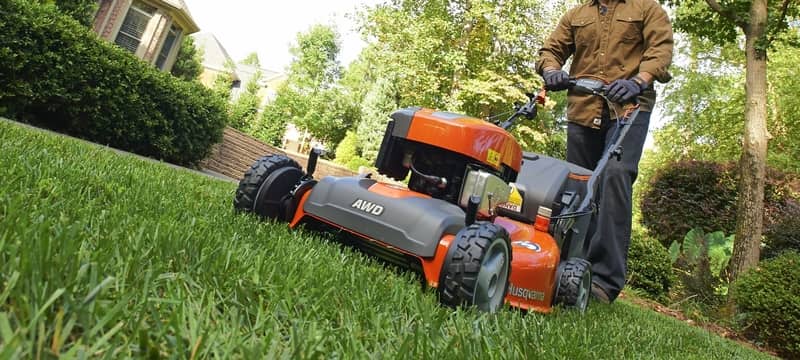
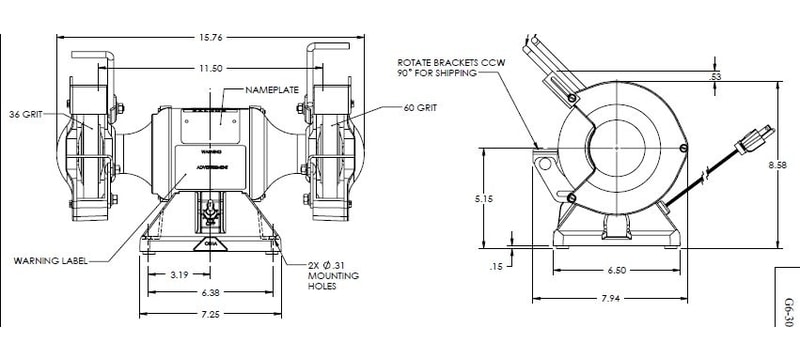

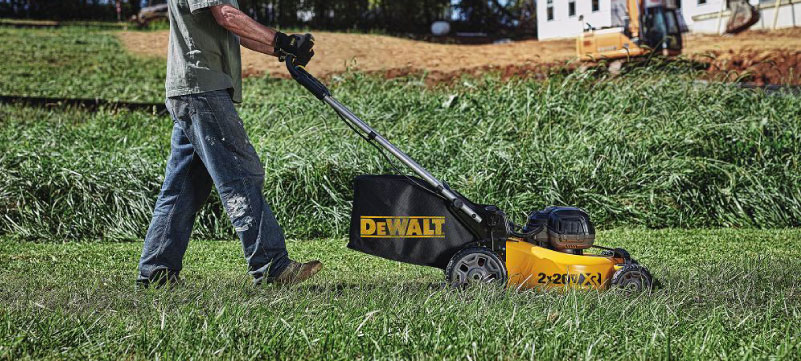
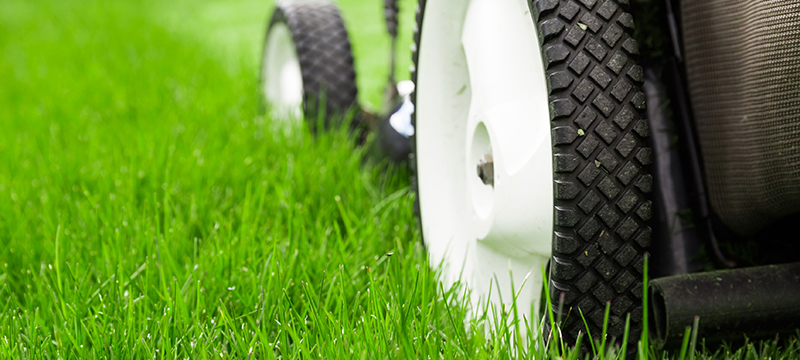
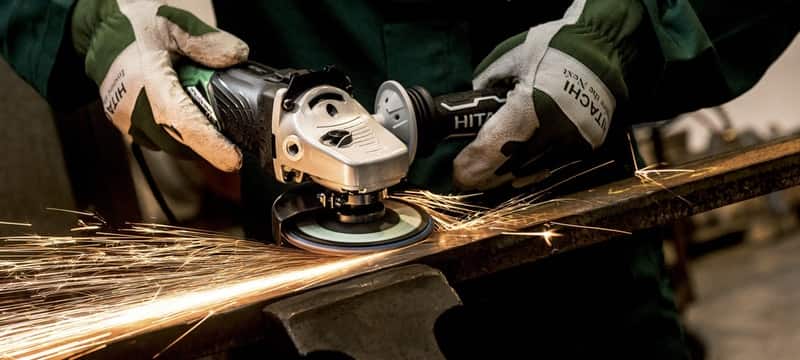
2 Comments
Trish
August 27, 2020 at 9:46 pmExcellent article on how to sharpen mower blades. I believe that more folks should be reading the proper way just as you outlined it. I was taught by my Dad who started every lesson on working with lawn mowers with “First you disconnect the spark plug.”
Thanks for sharing!
Trish
David A. thomas
June 8, 2021 at 3:06 pmGreat article! I’m reading up on how to sharpen lawn mower blades and this is the easiest and most informative I’ve come across so far. Helped me a lot.
Thanks for sharing.